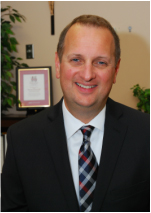This post was contributed by Dr. Daryl Hagan, Superintendent of Schools, Diocese of Evansville.

Faculty meetings – for better or worse – are universal features of the professional culture of schools. While research on faculty meetings is limited, existing literature suggests that meetings could be an arena where schools can address their common challenges (Hagan, 2014; Brandenburg, 2008; Michel, 2011, Riehl, 1998). The following are seven effective practices for consideration to improve your faculty meetings.
1. Catholic Identity: Signs of Catholic culture should be visible within the physical environment of the meeting. A prayer table is an appropriate focal point. All meetings should begin and end with prayer. Consider prayer experiences that may be duplicated in the classrooms. Principals should provide the resources electronically to teachers for easy download and duplication.
2. Agenda: Prior to the meeting, an agenda should be posted and/or emailed out to the faculty. Meetings should have a clearly stated purpose and include topics to be discussed, beginning and ending times, and who is responsible for what parts of the meeting.
3. Environment: In addition to seeing signs of Catholic culture, the room should be an appropriate size. Arrangement of the seating should reflect the agenda items. Food and beverages are a necessity. Themes are fun and keep the overall mood of the meeting positive. Ask yourself if the environment is welcoming to teachers or does it look like a room where 30 students just left for the day.
4. Professional Development: Every meeting should have a professional development component that preferably ties back to the school improvement plan/strategic plan. Principals could use the Four Corners exercise and ask teachers to go to one of the four corners to have a discussion on a specific teaching strategy. Other examples are a book review, article review (Momentum has great articles!), YouTube Video, highlighting a specific teacher at the school, skyping a Catholic educator from another school or diocese, etc…
5. Community/Culture Building: Each meeting provides the opportunity to build a positive culture among the faculty. Community building comes in many forms: petitions during the opening prayer reflects the thoughts and prayers of the faculty; a quick sharing of what’s new with you or thank someone on staff for something; name tags that highlight your favorite college basketball team during March Madness; a fast game of rock, paper, scissors to get everyone up and moving; and celebrating birthdays and school anniversaries can be fun and entertaining.
6. Talking: Reflect back on the last few faculty meetings and gauge who did most of the talking. In effective faculty meetings, it would be the teachers. (Note the correct answer is teachers and not one or two teachers!) Remember, we are attempting to model behaviors that we want to see in the classroom.
7. Laughter: Finally, as if we were utilizing a scorecard, rate your meetings on the laughter meter. Did the faculty meeting provide opportunities for all present to laugh? Maybe the laughs came from the crazy theme, or a success story told by a teacher, or the activity of putting the puzzle together, etc…
Faculty meetings provide the opportunity to lead, learn, and proclaim. When we create meetings that utilize effective practices, student success is not far behind. Faculty meetings should have a both/and approach, where there is room for professional discussions and community building that is focused on our mission to form students in the Catholic faith.